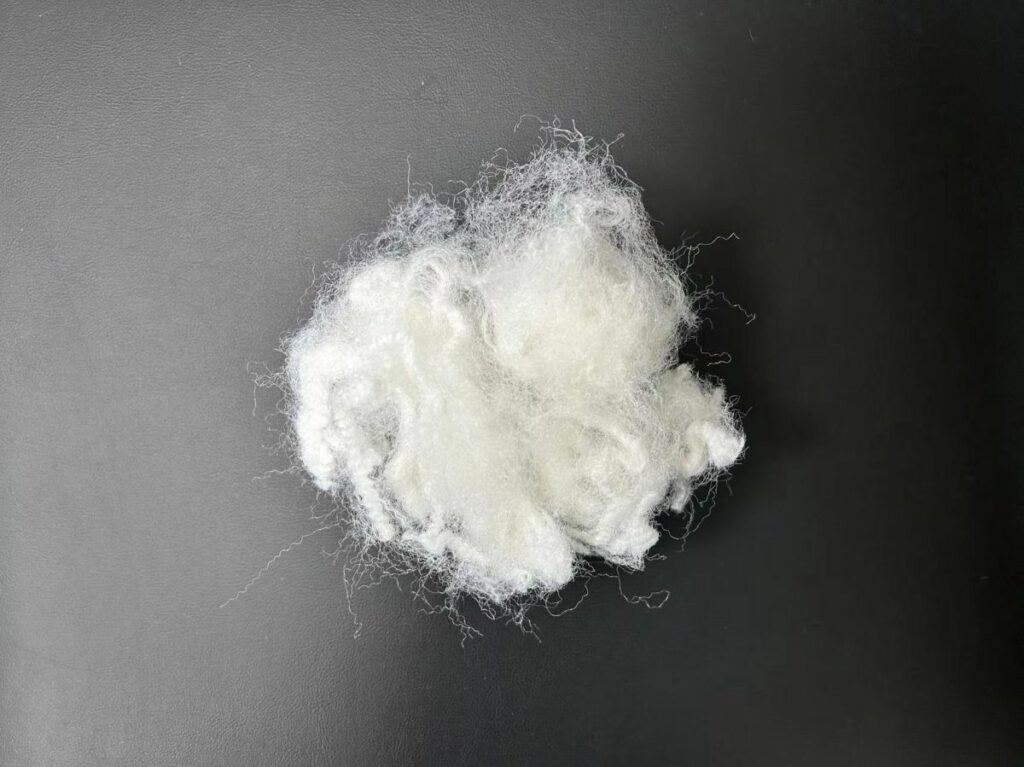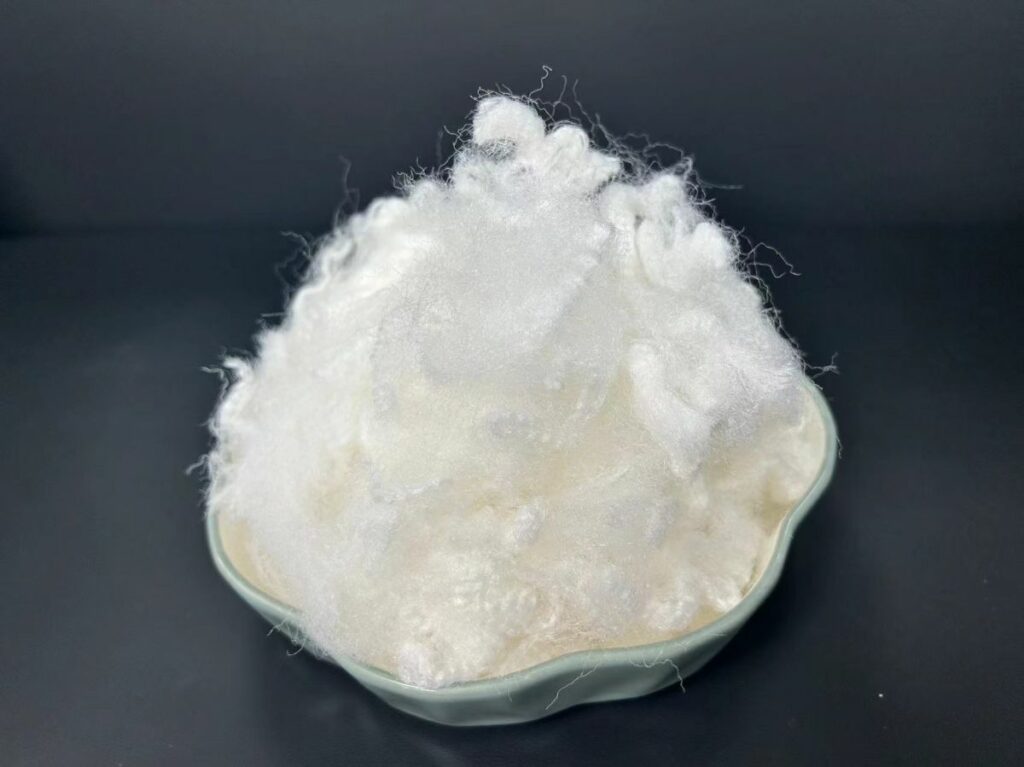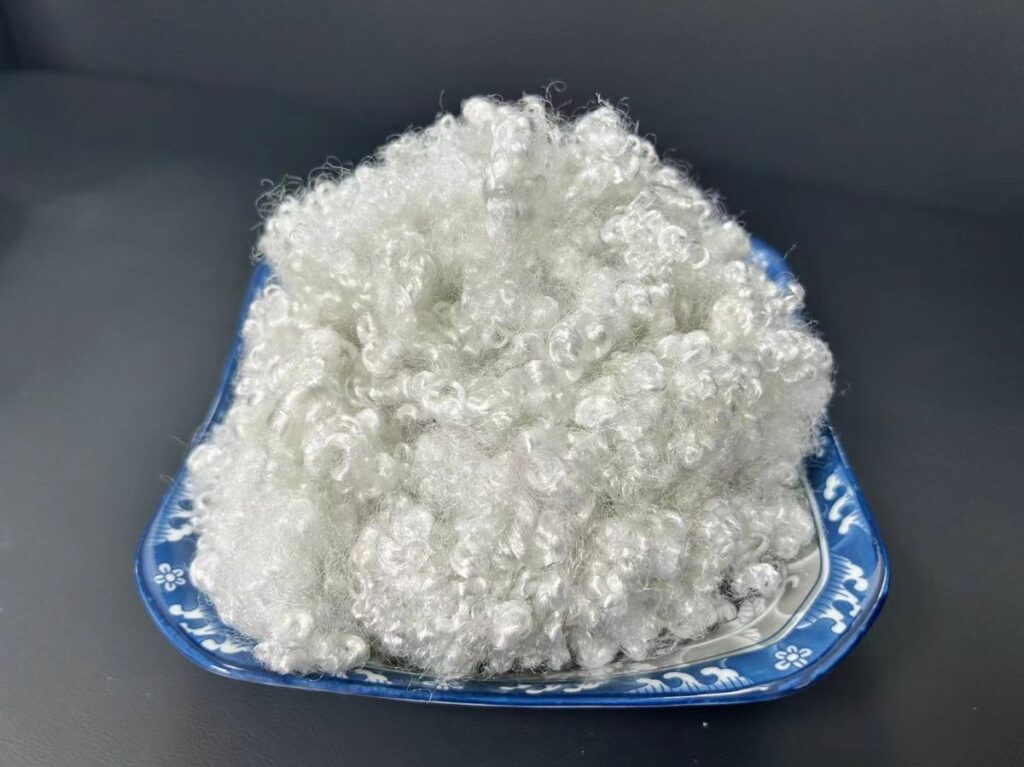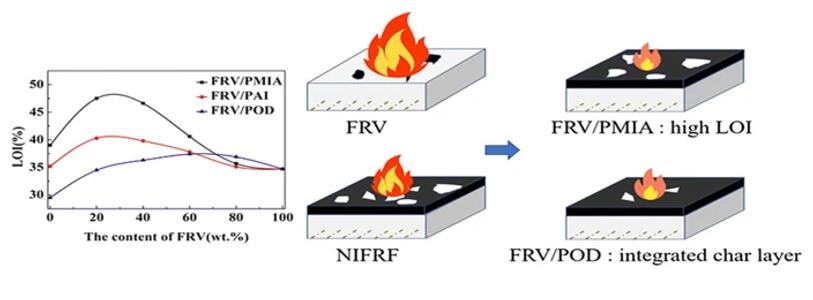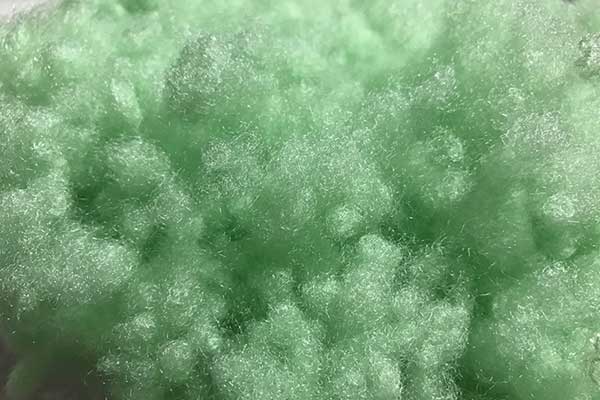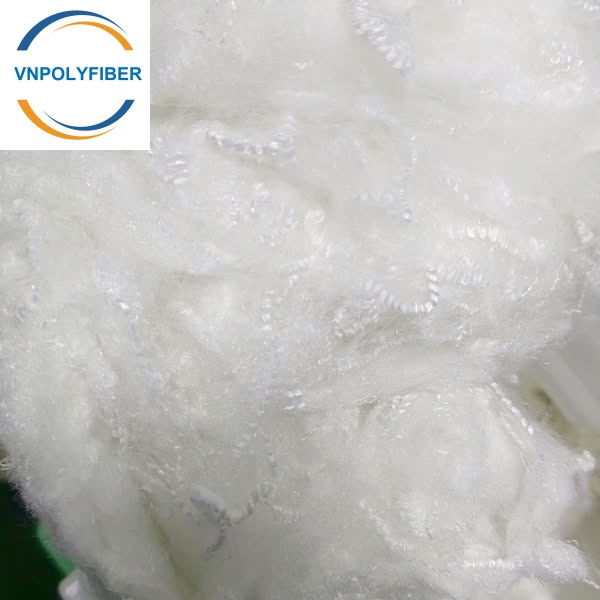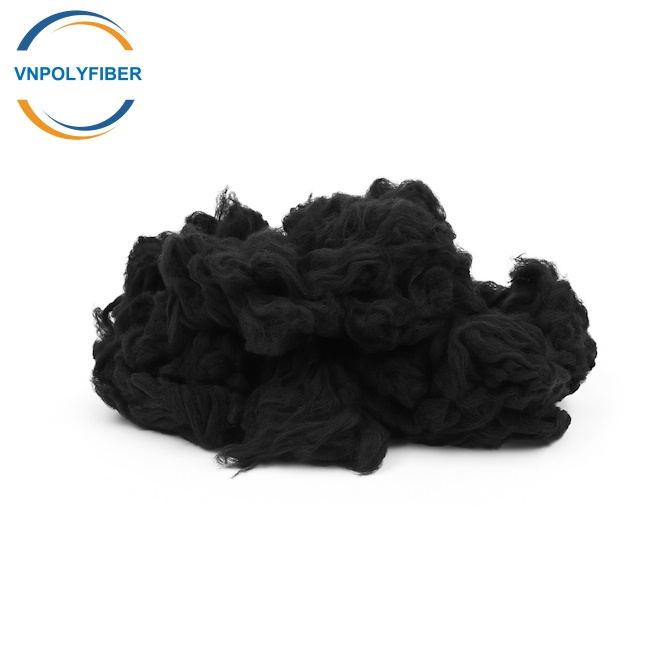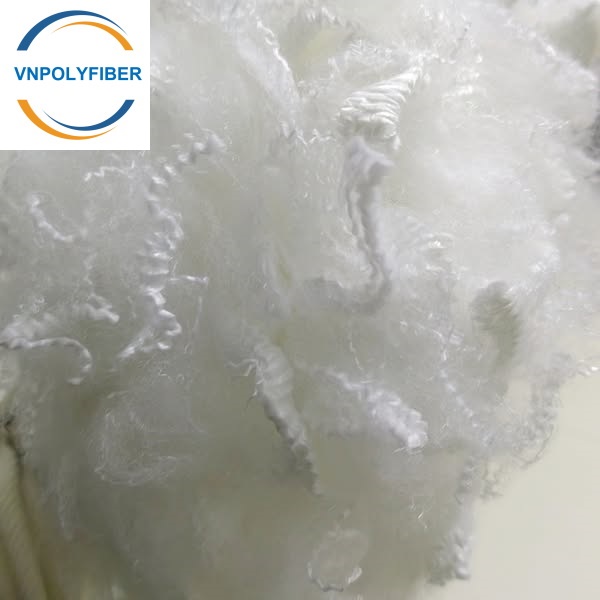Flame Retardant Polyester staple Fiber
- Flame-Retardant Fiber is a specialized fiber material widely used in industry and fire safety for its exceptional flame-retardant properties.
- Fire-retardant polyester staple fiber material combines polyester’s advantages with excellent flame retardant properties, enhancing safety and performance in a range of applications like home textiles, clothing, seat materials, automotive interiors, and more.
PRODUCT DETAIL
Flame Retardant Polyester staple Fiber is a type of environmentally friendly high-tech polyester fiber with flame retardant capabilities. The fiber is a result of advanced flame retardant technology that involves adding non-halogen elements like phosphate reactive flame retardants and inorganic flame retardant polymer during the fiber aggregation process. Phosphorus-containing flame retardant fiber is well-respected internationally for its flame retardant qualities.
Flame retardant polyester fiber is a modified polyester fiber that melts rather than burns when exposed to fire. When removed from the flame, it self-extinguishes. Compared to regular fibers, flame-retardant fibers have significantly lower flammability, slow down combustion rates, can quickly self-extinguish after the fire source is removed, and release less toxic smoke. They are commonly used in clothing, home decor, nonwoven fabrics, and filling materials.
1. Flame retardant fiber is a type of synthetic fiber treated with chemicals to make it resistant to fire. It is utilized in various applications, such as upholstery, clothing, and insulation.
2. There are different types of flame retardant fibers, each with its own advantages and disadvantages. Some are more effective at preventing the spread of fire. They are usually more costly than non-flame retardant fibers.
3. Flame retardant fiber is frequently used in upholstery and furniture, helping to prevent fires from spreading and reducing damage and injury risks.
4. Flame retardant fiber is also found in clothing, offering protection in case of fire. Firefighters often wear flame retardant clothing to protect themselves from heat and flames.
5. Insulation also utilizes flame retardant fiber to prevent fires from spreading through the material and damaging building structures.
Flame Retardant Polyester Staple Fiber material is an environmentally friendly high-tech polyester fiber with flame retardant properties. During fiber polymerization, phosphorus-based reactive flame retardants and inorganic polymer flame retardants with non-halogen elements are added.
Flame Retardant Polyester Staple Fiber material is a synthetic fiber product with outstanding flame retardant properties. Made of polyester, a lightweight, durable, easy-to-care-for synthetic fiber, this short fiber is prepared with flame retardants to slow down fires, reduce their spread, and enhance safety in fire or high-temperature situations. Widely used in industries concerned with fire safety, this fiber is a preferred choice due to its superior performance.
Technical Parameter
Product design concept: Fibers containing phosphorus-based flame retardants and inorganic polymer flame retardants are incorporated during polymerization.
Product features: The affordable and high-quality Flame retardant polyester staple fiber for home use delays fire spread, self-extinguishes from fire, does not produce toxic gases during combustion, and has an oxygen index of ≥ 32%.
Classification
- Intrinsic flame-retardant fibers mainly include inorganic fibers and organic high-performance fibers, of which inorganic fibers include basalt fibers, glass fibers, quartz fibers, boron fibers, ceramic fibers, etc.; organic high-performance fibers include aramid fibers, polyimide fibers, poly Phenyl sulfide fiber, aramid sulfone fiber and polytetrafluoroethylene fiber, etc.
- Modified flame retardant fibers mainly refer to fibers with good flame retardant properties obtained by physical or chemical modification, such as flame retardant polyester, nylon and cellulose fibers. The main preparation methods include copolymerization chip spinning method, blended spinning method, composite spinning method, and so on.
Comparison of flame retardant properties of common fibers
The limiting oxygen index (LOI) refers to the minimum oxygen volume fraction required for the sample to maintain a complete combustion state in a mixture of oxygen and nitrogen. The higher the LOI, the harder the material is to burn. According to the limiting oxygen index (LOI) value of the fiber, it is generally believed that the oxygen index of flammable materials is<22, 22=”” the=”” oxygen=”” index=”” of=”” combustible=”” materials=”” is=”” between=”” and=”” flame-retardant=””>27. The LOIs of common fibers and flame retardant fibers are shown in the table below.
| LOI values of common fibers | LOI values of flame retardant fibers | ||
|---|---|---|---|
| Fibers | LOI | Fibers | LOI |
| Cotton fiber | 18.0 | flame retardant PAN fiber | 27 |
| Acetate fiber | 17.0 | flame retardant PET fiber | 28 |
| PAN fiber | 18.5 | PVC fiber | 35 |
| Polyester fiber | 23.5 | flame retardant PP fiber | 25 |
| Nylon fiber | 22.0 | Phenolic fiber | 50 |
| Silk | 23.0 | Polysulfonamide (PSA) fiber | 33 |
| Wool | 24.0 | Polybenzimidazole (PBI) fiber | 40 |
Flame Retardant Mechanism
The flame retardant mechanism is to try to hinder the thermal decomposition of the fiber, inhibit the generation of flammable gas and dilute the flammable gas, change the thermal decomposition reaction mechanism (chemical mechanism), block the thermal feedback loop, and isolate the air and thermal environment, thus to eliminate or reduce the influence of the three elements of combustion (combustible substances, temperature, oxygen) to achieve the purpose of flame retardant. Generally, the mechanism of fiber flame retardant includes endothermic effect, covering protection effect, gas dilution effect, surface effect of particles and droplet effect.
Research Information
With the continuous development of flame retardant technology, innovative flame retardant fibers are being researched and developed. The current development trend of flame retardant fibers includes but is not limited to long-term environmental protection type, functional composite type and green environmental protection type. For example, Shuheng Liang et al. proposed a simple and effective method to improve the flame retardancy of blended fibers based on the synergy between flame retardant fibers. In this work, flame retardant viscose (FRV) was blended with three nitrogen-containing intrinsic flame retardant fibers (NIFRF), respectively. The prepared FRV/poly(isophthalamide) (PMIA) fibers exhibited excellent flame retardancy with an LOI as high as 47.5%.
Video
FAQ
1. What do you offer?
We produce recycled hollow conjugated siliconized and non-siliconized polyester staple fiber mainly.
We also supply home textile machineries and products at factory origin and its price.
2. What is it used for?
Our fiber is widely used in filling, non-woven fabric, spinning, bedding stuff, home textile, automotive interiors…
3. Are you a factory or a trading company?
We are a factory specialized in polyester staple fiber for many years but now we also have our own professional trading company. We will source many types of textile products such as yarn, PP fibers from others to supply our own customers as well. We also provide our own customers with other related products such as: Foam, Pillows, Cushions, Toys, Down/ Feather,…
4. Where is your factory location?
Our factory locates in the north and the south of Vietnam. You can visit us from Ho Chi Minh City and Hanoi City, Vietnam. You could contact our salesman to fetch you if visiting.
5. Can you accept free sample?
Yes, the hand sample is free when not exceed 1 kilograms. Upon price confirmation, we will provide a sample within 2-3 days; the freight cost will be charged to client.
6. Can you provide ODM service?
Yes, we work on ODM orders. Which means size, material, quantity, design, packing solution, etc, will depend on your requests, and your logo will be customized on our products.
7. How about your quality? What’s the minimum order Quantity (MOQ)?
Please try a trial order, you will know it. The MOQ is 23,000 Kilograms/order, but the price will be lower if you order bulk volume.
8. Can I mix different items in one order?
Sure, you can mix any products we can provide.
9. How can you guarantee the product quality?
We have experienced QC team. We control not only productive process but also raw material. In addition, we have different kinds of testing instrument to help us guarantee the product quality.
10. What’s the payment terms?
L/C at sight, 30% TT in advance are mostly accepted; other terms shall be negotiable by both sides
For more information, please feel free to contact :
Mr. Tony Tan
Mobile number: +84 90 466 5251 (Whatsapp/Wechat/Viber/Signal)

